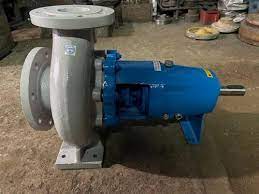Efficient Sales Tactics: Mastering the Art of Optimized Route Planning
Understanding the Impact of Route Optimization on Sales Performance
Stepping into the shoes of a salesperson, one quickly grasps the importance of time management and efficient resource use. Effective routing becomes crucial in an arena where the number of prospects met could be directly proportional to the number of deals closed. Consider the sales representative who meticulously plans each day, optimizing their route to reduce transit time between meetings and maximizing the time they can spend with potential clients. This efficiency naturally leads to more sales opportunities and better use of the company’s resources.
Moreover, profoundly embracing advanced routing technology affects an organization’s bottom line. An optimized route goes beyond merely saving minutes on the clock; it fosters a systematic approach to the whole sales process. By reducing mileage, wear on company vehicles diminishes, fuel expenses are minimized, and time spent on the road is cut significantly. These savings accumulate over time, leading to a noticeable reduction in operational costs and an increase in overall productivity. The strategic use of a thoughtfully crafted sales route planner is no longer a luxury but a fundamental asset that can produce a marked difference in a sales team’s performance and ecological footprint. The symbiotic relationship between environmental stewardship and economic efficiency exemplifies how businesses can profit while being environmentally conscious.
Insight into the nuances of route optimization reveals that planning efficient and ecologically sound routes resonates beyond the immediate context, contributing to far-reaching environmental benefits. Such principles are becoming increasingly relevant as businesses navigate an era of heightened environmental awareness. Intelligent routing has the potential to cut greenhouse gas emissions, giving businesses a chance to take the lead in sustainability initiatives. It is a valuable reference showcasing the environmental implications of transportation and logistics and discussing the impact of efficient transportation on sustainability.
The Science of Sales Route Planning: Strategies and Tools
When dissecting the methodology behind optimized sales routes, we delve into a science that intertwines behavioral analysis, geographic information, and temporal factors. The digital age has armed sales strategists with data-rich tools to dissect patterns and optimize itineraries based on real-time and historical data. This digital leap signifies an operational revolution, replacing intuition and guesswork with precision and predictability. Advanced techniques powered by big data analytics and sophisticated algorithms have turned route planning into an exact science that can predict with surprising accuracy the optimal paths and necessary adjustments for day-to-day sales activities.
The amalgamation of these digital tools with human expertise creates a potent mix that yields improved sales routes. Cutting-edge software provides many capabilities, from tracking customer density and purchase patterns to customizing visit schedules that fit into larger strategic goals. These systems can interlace seamlessly with customer relationship management (CRM) systems, ensuring uninterrupted data flow between sales patterns and routing decisions. The seamless relationship ensures that customer intelligence gleaned throughout the sales process is directly fed into route optimization for continuous improvement.
As businesses strive to keep ahead of the curve, they use technology to streamline processes and enhance efficiency. Leaders who recognize the value of technological tools in cutting commute time and optimizing workflows are positioning their organizations to thrive in a competitive marketplace. The ongoing dialogue around these technological advancements is encapsulated in a Forbes article, which articulates how technology is becoming an ultimate game-changer in reducing commute time and boosting productivity.
Building a Winning Sales Route: A Step-by-Step Guide
To craft a winning sales route, one must first grapple with the core question: Which customers bring the most value to the company? Assembling a sales route thus begins with prudently selecting destinations based on customer value, geographic positioning, and sales potential. These factors form the cornerstone of route planning, ensuring that time spent in transit is dedicated to reaching the most promising opportunities for business growth. Each step in constructing an optimized route is deliberate, from pinpointing strategic stops to calculating the most favorable order of visits.
Route planning requires a tactical blend of geography, timing, and prioritization. Incorporating these elements leads to a step-by-step playbook that starts with identifying customer locations, discerning the optimal sequence of visits, and allowing flexibility to accommodate the unpredictable nature of sales calls. Factors like real-time traffic conditions, the likelihood of customer availability, and proximity to other potential clients are all considered to craft a dynamic route that maximizes time spent with clients and minimizes downtime.
Learning from the ground realities sales teams face across domains offers a window into the myriad challenges and solutions in route planning. Case studies reveal the significance of foresight in scheduling and the pitfalls of ignoring human elements such as downtime, fatigue, and personal rapport-building with clients. By applying these insights, new routes can be made more sustainable and efficient, allowing salespeople to stay motivated, fresh, and ready to maximize every opportunity to engage with customers.
Case Studies: Real-World Success Stories of Route Planning
The theoretical benefits of optimized sales routing are compelling, but they are rendered vivid and convincing through the lens of real-world applications and success stories. Case studies from various sectors demonstrate the transformative power of intelligent route planning. We witness tales of businesses that have overhauled their sales processes, replaced haphazard planning with rigorous strategy, embraced technological solutions, and reaped sales volume, efficiency, and customer satisfaction rewards.
Such narratives reinforce the evidence of improved sales outcomes and elevated efficiency following the introduction of data-driven routing strategies. Moreover, the impact extends beyond the measurable business metrics to the intangible yet critical aspect of workforce morale. Sales representatives exhibit enhanced motivation and engagement, leading to higher job satisfaction and performance when they are relieved of the stress of traffic jams and lost time. Happy employees are generally productive. Thus, the benefits of an optimized sales route manifold are better sales results, reduced operational costs, and a happier sales team.
Future of Sales: Predictions for Route Planning Technology
In forecasting the trajectory of route planning technology, experts are aligning their sights with the rapid advancements in artificial intelligence (AI), machine learning, and autonomous vehicles. These innovations harbor the potential to refine the sales route planning process to an unprecedented degree, foreseeing challenges and optimizing routes before the salesperson even starts their vehicle. The utilization of AI is anticipated to provide predictive capabilities that will automatically adjust schedules and routes based on traffic conditions, weather forecasts, and client preferences, crafting prescient and adaptable strategies.
Autonomous vehicles are another groundbreaking technology that may redefine the logistics of sales. Offering a vision of hands-free travel, they could completely transform the role of the sales representative, enabling them to focus on client engagement and preparation rather than the demands of driving. Moreover, the proliferation of real-time data can provide granular insight into the most minute changes in day-to-day conditions, allowing sales professionals to adjust their strategies dynamically to stay competitive.
With technological innovation at the forefront of route planning, the coming years promise to usher in a new era of efficiency and precision for sales strategies. As these developments unfold, companies that recognize the value of technological adoption and adapt to its advances can look forward to thriving in a business landscape where time, more than ever, equates to opportunity.







